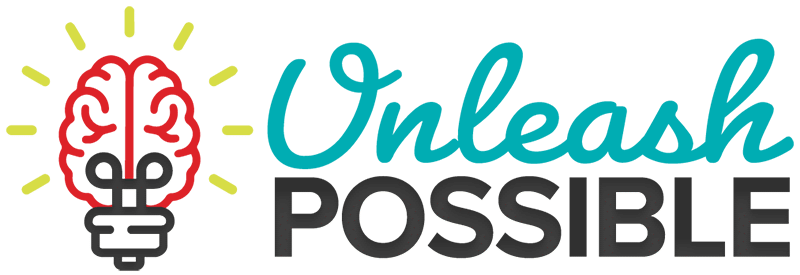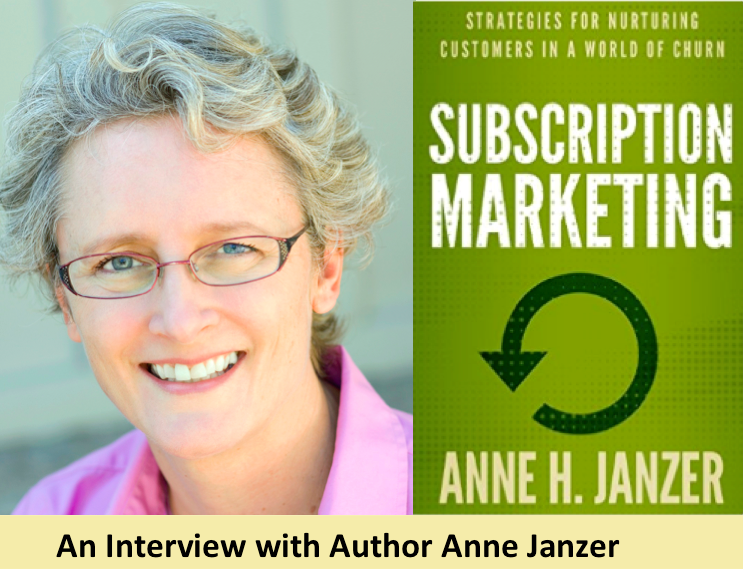Subscription Marketing: An Interview with Anne Janzer
Although I’m not a designer I have used Adobe products for years to make minor modifications to PDFs and for developing template based collateral. When I launched my own practice I purchased a perpetual Adobe Acrobat Pro license. Last year I decided to explore some additional products for manipulating photographs.Long story short I ended up buying a 12-month subscription license to the full creative suite of products Adobe offers. On the surface this seemed like a big win for Adobe as I’d significantly increased my purchases.However, when it came time to renew my subscription I didn’t even give it a second thought and cancelled. To be clear, there is absolutely nothing wrong with the products I bought. I’m sure they work perfectly. The problem is I hadn’t taken the time to learn how to use them.The way products & services are bought today opens up huge new opportunities, but only if we change the way we engage with customers to drive adoption and long-term value.With my recent Adobe experience fresh in my mind I picked up Subscription Marketing by Anne Janzer. I found the book a healthy reminder of just how different marketing must be in a subscription business model than traditional one-time licensing.Anne was kind enough to indulge my curiosity further as we talked about the book’s key messages. Below is the transcript from our conversation (edited slightly for length). I hope you get as much out of it as I did.
(Samantha) Before reading Subscription Marketing my definition of subscription services was pretty narrow. How would you define it for our readers?(Anne) Yes, I agree with you that many us have taken a very narrow view of it. In fact, when I first published the book (it’s been out for about a year and a half) people would immediately think it was about consumer media: newspapers, magazines. Even people in the software industry would responded that way.That definition is clearly too narrow. If you look closely, the subscription model is permeating all kinds of products and services both B-to-B and B-to-C. I use the term subscription marketing to refer to the practice of extending the marketing relationship with a subscriber long after the initial sign-up. It's about continuing to add value to the customer relationship.(
Samantha) What's the most important lesson you want readers to learn from Subscription Marketing?(Anne) If I could pick one thing to put in reader’s heads, it is to shift your perspective of value when it comes to the customer. Stop thinking about how much a specific customer is worth to your business, and shift instead to thinking about how much value your business provides to the customer. When you focus on your value to customers, it opens up new avenues for marketing to take action to strengthen relationships over time.
(Samantha) That’s really important advice. As marketers how do we balance the desire to think like a customer with finding customers who are fiscally responsible for us to serve. In the old world it was common for technology companies to see 20% of customers driving 80% of revenue. Are there rules of thumb in subscription services that people should expect when they build their business models? (Anne) You must provide value to your customers in a way that sustains both your business and your customer. If you know the value that your service or product offers to your customer, then you have a better understanding of who’s appropriate for up-selling or premium versions, and how to tier and structure pricing in a way that makes sense.You will also have a better idea of other places that you can add and extend value. The closer you get to your customers the better you understand their needs.
(Samantha) Many of my clients come to me when planning a subscription service launch assuming they have to give away their product with a ‘freemium’ offer to start building a base of customers. I think there are models where that has worked, but I’m not personally convinced that that’s always the place to start. What has your research showed you?(Anne) You have to be careful with the freemium model because you don’t want to be in the situation of having to “take back” value. I’m not trying to jump on their case, but that’s what Evernote is doing right now. They have a freemium model and now they’re restricting the free service to only two devices, apparently in hopes of getting more paying customers. Evernote’s freemium users have helped the company grow by advocating and spreading the word about the application. Now the company is reducing the value of that free service by saying you can only use it on two devices unless you pay more. Time will tell if that decision impacts advocacy and long-term adoption of the tool. But at a minimum, it makes their users more vulnerable to competitors.As soon as the customer senses that you are taking them for granted, whether that is true or not, you’ve damaged their trust. The long-term subscription relationship is built on trust. When starting with a freemium model, make sure you have something that you can sustain. For example, if you only plan to give away your service for a year, make that really clear at the start. Changing the terms of use for loyal customers is a risky move.
(Samantha) In the book you give some great examples of subscription services now available, even airline food! What is driving the transition to this new business model?(Anne) Many trends are contributing to the growing subscription economy. For example, look at the Sharing Economy businesses, Uber and Airbnb and Lyft. With those services you become a member and subscribe with your data, then pay as you go for what you use. The idea at the core is paying for access rather than ownership. That’s a fundamental shift happening in many parts of the economy, and it’s helping to fuel the shift to subscription models.Another good example is the growth in the Internet of Things. You’re selling a device, but maintain an ongoing relationship through data provided from the device. For example, you buy a Fitbit, but you use the app to track your activity and you can buy a premium app and get more reporting.
(Samantha) It strikes me that businesses tend to tout subscription purchase models as always positive for the consumer which might be an over simplification of the transition. What are gotchas for consumers that subscription providers should be aware to address in their messaging?(Anne) Many of us have been burned by a subscription business, which has left us mistrustful.For example, you can feel like you’re trapped or being snookered if you sense that the provider is selling you something that they believe you’re never going to use. The health club membership is an example. Some memberships are predicated on the idea that people will sign up with a lot of enthusiasm in January and trail off by March. At the end of the day, a subscription isn’t always the right model for the customer.I wrote a blog post called the Nine Circles of Subscription Hell. It’s worth the read if you want to explore the not-so-glamorous side of consuming subscription services.
(Samantha) You astutely surmise that non-subscription business models are not going away completely. How does a business evaluate whether adding a subscription model should replace or augment other ways of doing business?(Anne) It varies by industry and business. If you look at the software industry where you and I have both done a lot of work, it’s pretty hard to maintain both a packaged and a cloud offering. You can do it, but you have different engineering trains and updates, so you have to look at that what’s happening in the back office see if it make sense.Again it comes back to the sense that businesses have to earn some customer trust; part of that trust is not basing your business model on doing something to the customer’s long-term disadvantage. Some businesses should offer both a subscription and a per piece payment model, so that people can choose the model that fits their needs. Audible is a good example. You can subscribe to one or two audiobooks per month, or buy extra ones outside of the subscription, or just buy the audiobooks individually.
(Samantha) It's long documented that subscription business models can take years to be profitable as they build critical mass. What pricing strategies can a business follow to shrink the gap?(Anne) That’s the most painful part for businesses that are accustomed to having upfront revenue when they sign a customer. I was working with a little startup and their investors demanded the offering be in the cloud and subscription based. When the founders came back to their investors with the first deals, the investors said, “Wait, why are these deals so small?” In subscription businesses, you don’t get a huge enterprise sale up front.You have to think through all the implications when modeling revenues. Consider three variables:
What’s your cost of customer acquisition
What’s your margin for serving that customer
What’s your average customer churn
A startup needs to monitor those values carefully across their customer base. If you delight your loyal customers, they will refer you to other people and give you new customers, which lowers your cost of acquisition.One of the best examples of this is Slack, which had very rapid growth in the enterprise software space. I don’t know the details of Slack’s finances, but from what I understand they focused all of their efforts on delivering value to the customers and helping them find success right away. There’s obviously a network effect to something like Slack because it’s a group collaboration tool. Everybody in a team will get on and then other teams would see how it’s working. What fuelled their growth was how much people loved working with the software.
(Samantha) I think that you bring up a really important. In my experience when customers feel like they’re spending less up front they make less of a commitment to fully leveraging the offering. (Anne) Yes, there is less of a commitment on both sides. Research shows that for many subscriptions, 90% of those customers that don’t use the service in the first 90 days will not renew. There is a real urgency to getting people from the moment of signup to working with it.
Ready to explore your own subscription marketing program? I’d encourage you to read Ann’s book. You can get your copy here.
(Samantha) Your second book on the writing process has just been published, congratulations! How was writing that different from subscription marketing? (Anne) I learned quite a bit from doing the marketing book, so I was more comfortable starting out on this one. I did a lot of research into the cognitive science behind writing as well as what other writers do, and the research made me examine my own process. It’s very meta: writing about writing made me be more disciplined about my own writing practices. I feel that writing Subscription Marketing made me a better marketer, and writing The Writer’s Process made me a better writer.

